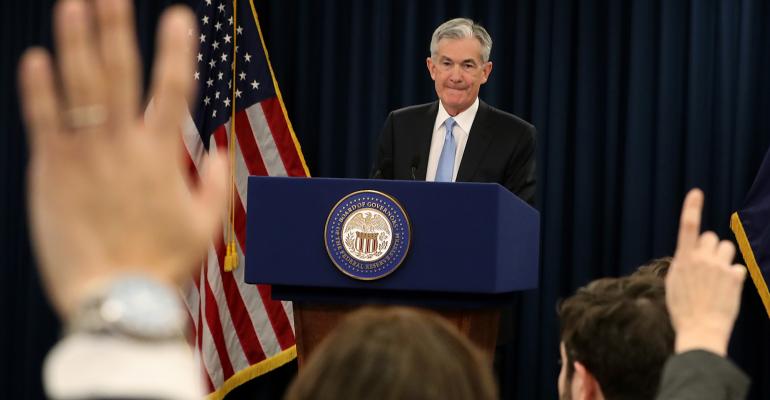By John Bellows
After three years and nine hikes, the Federal Reserve's normalization program is now over. In its place, Chair Jerome Powell has signaled a “wait-and-see” stance, and the Federal Open Market Committee has indicated that further rate hikes are unlikely this year. This is surely a reasonable response to an environment of slowing growth and heightened global risks.
The Fed is also starting to show some concern about inflation. It’s straightforward to see why. Core inflation has recently turned lower, after only briefly touching the Fed’s 2 percent target last year. Investors in inflation markets doubt that inflation will average 2 percent over the coming five years. And the sluggish inflation around the world highlights the myriad downside risks.
The Fed’s concern about inflation is motivating officials to rethink their strategy. In particular, they are considering an “average inflation targeting” (AIT) strategy that would require them to aim for above-target inflation in some periods, in order to offset others when inflation is below target. The hope is that such a strategy would, at a minimum, support inflation expectations.
The Fed’s ability to drive inflation expectations higher, however, is questionable at best.
In our opinion, a large part of the problem is that the Fed has damaged its own credibility by subordinating its inflation objective. Over the past few years, the Fed prioritized policy normalization and persisted in hiking interest rates, even though inflation has remained consistently below target. Actions speak louder than words. Traders have understandably started to doubt the Fed’s commitment to meeting its inflation goal.
To reestablish credibility, we believe the Fed must take concrete action. The Fed’s own projections have inflation never rising above 2 percent. This is obviously inconsistent with the AIT strategy it is considering. If it is serious about inflation averaging 2 percent, the policy prescription is clear: Staying on hold is not enough; the Fed needs to be cutting interest rates.
Yet cutting rates would run against many of the Fed’s biases.
First, the Fed tends to be more focused on the unemployment side of the dual mandate. It would be uncharacteristic for the Fed to cut rates with the unemployment rate below 4 percent. Second, an easier solution to the AIT problem would be for the Fed to simply raise its inflation forecasts. Indeed, although it has not worked, that has been their solution of choice over the past few years.
Third, it is not obvious that Fed officials are ready to take meaningful policy risks. They may need to take risks in the next recession and may feel that it is better to save their political and social capital for that, rather than trying to get inflation a few tenths higher today.
Of course these biases could be overcome. But this would be a very surprising outcome. After all, there isn’t a single FOMC member who has rate cuts in their forecast at the moment.
Should the Fed elect to take concrete action toward supporting inflation, it is not clear that even that would be sufficient to raise inflation expectations. A number of central banks have tried to raise inflation expectations. These attempts have ranged from the mostly rhetorical (e.g., the Fed’s embracing a “symmetric” inflation target) to the more substantive (e.g., the Bank of Japan’s “bazooka,” which included negative rates, unlimited quantitative easing and aggressive forward guidance).
Yet, in all cases, inflation expectations trended back down after a short-lived rise following the announcement. The determinative factor seems to be that realized inflation failed to pick up.
Therefore, in our opinion, the assessment for higher inflation expectations seems to be a two-part test. The Fed must be willing to back the new AIT strategy with a rate cut in order to support inflation. Next, the Fed needs to catch a break with higher realized inflation.
If both happen, inflation expectations could move higher. If not, the Fed’s new AIT strategy is likely to meet a similarly disappointing fate as the other recent central bank failures. There are limits to what Powell and the Fed can control, but while it may run against their biases, they should at least consider cutting interest rates.
John Bellows is a portfolio manager at Western Asset, an investments subsidiary of Legg Mason. His opinions are not meant to be viewed as investment advice or a solicitation for investment.

